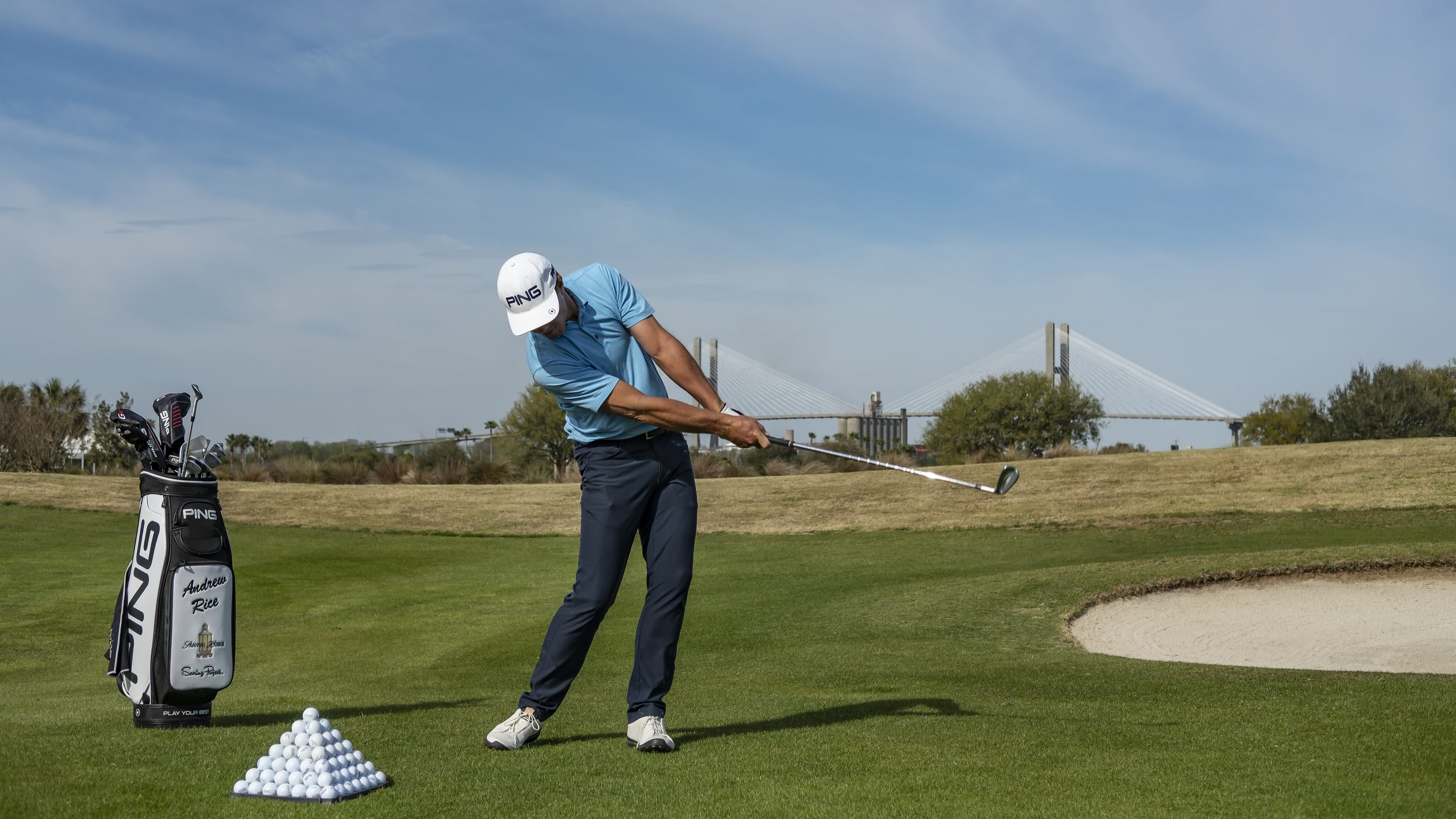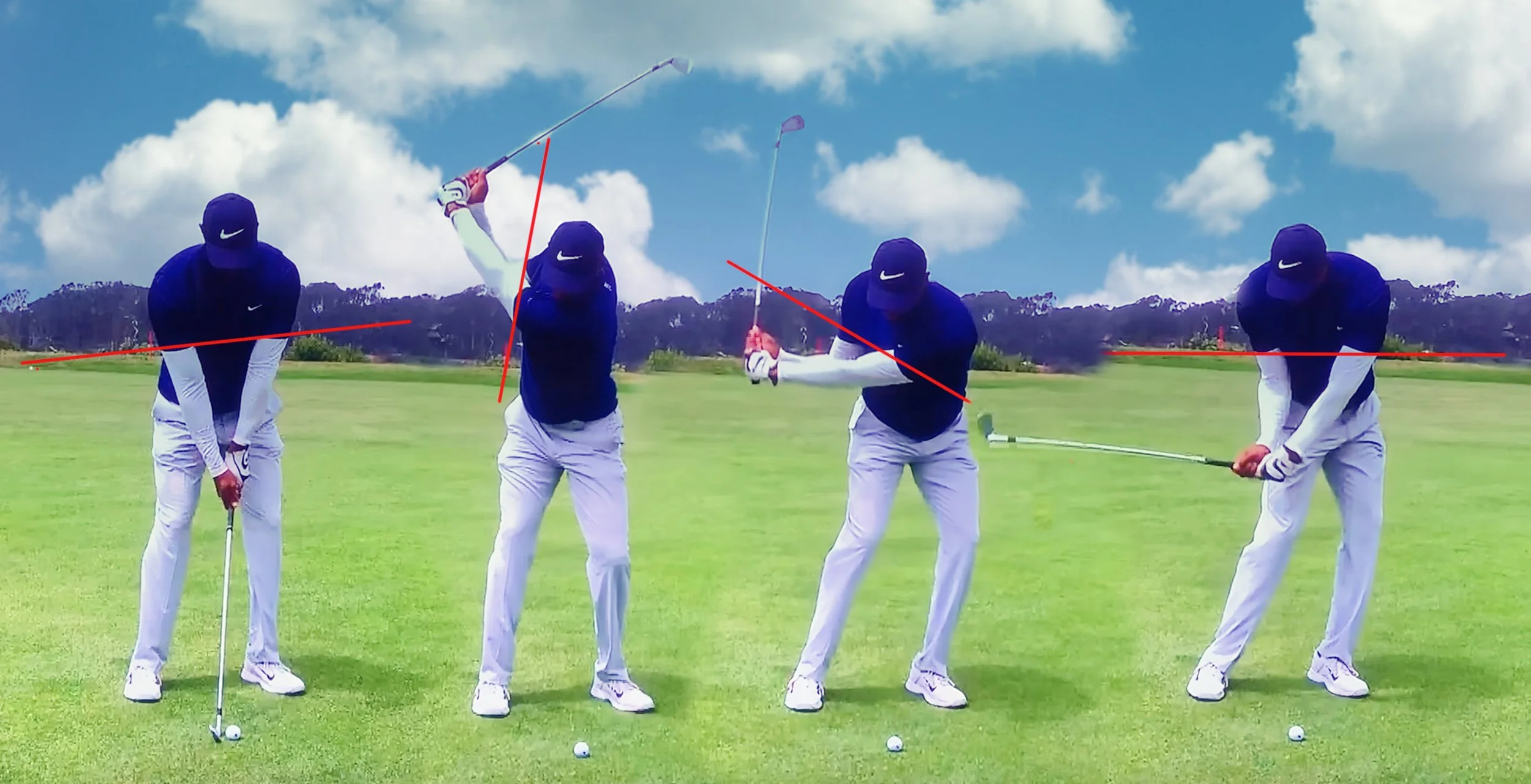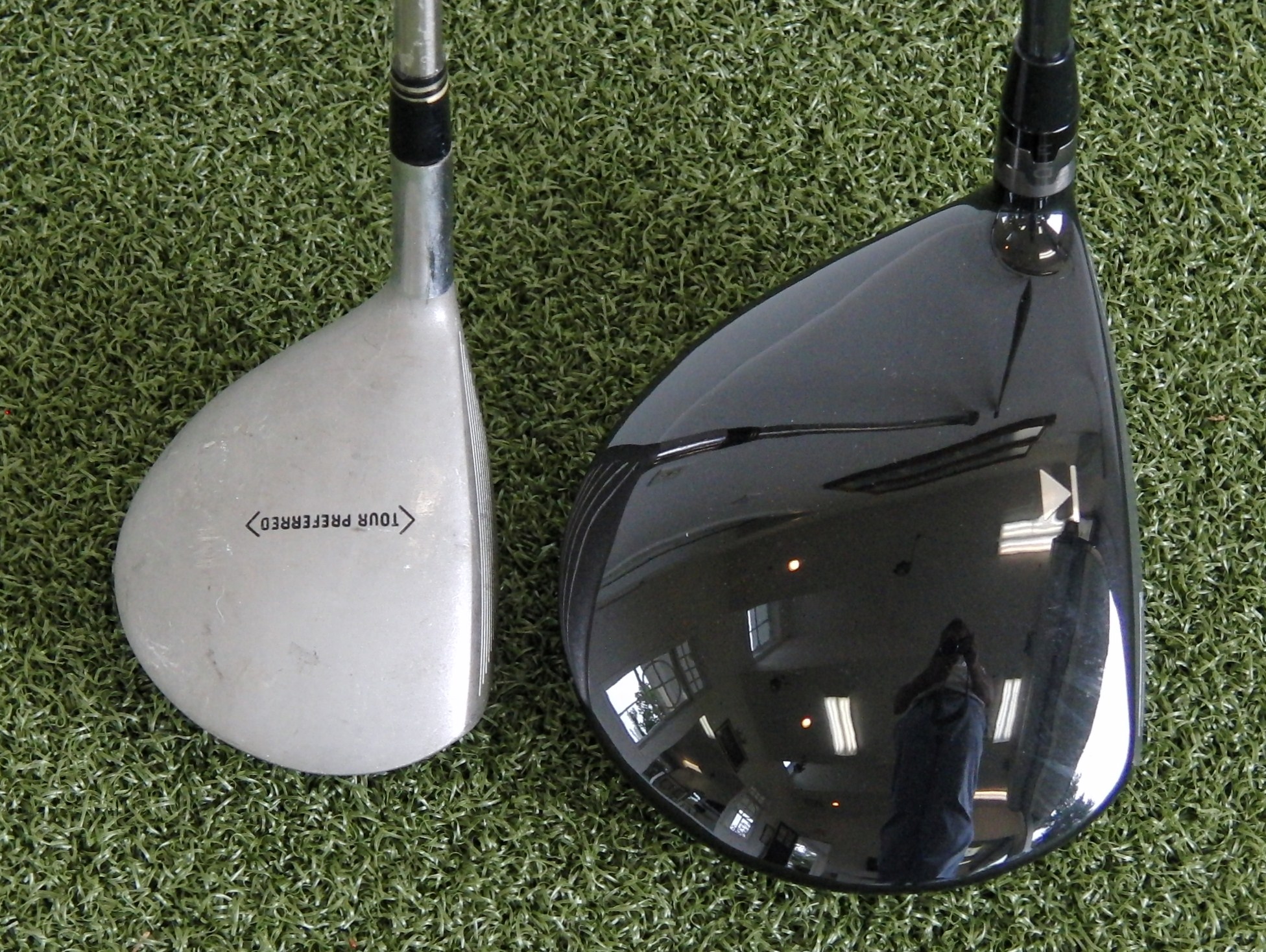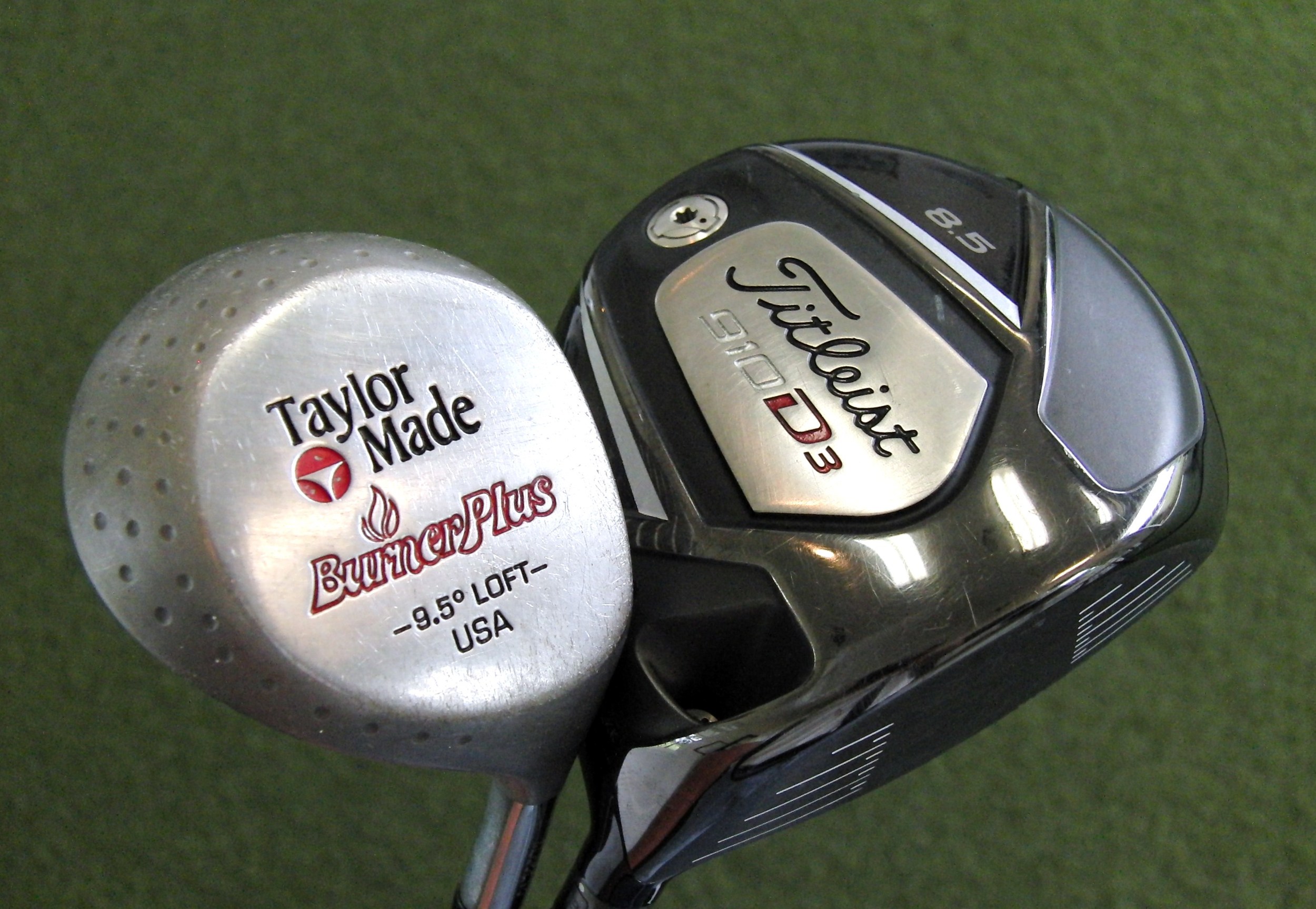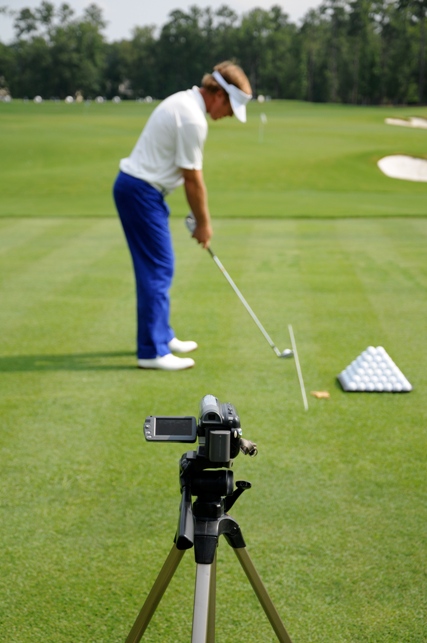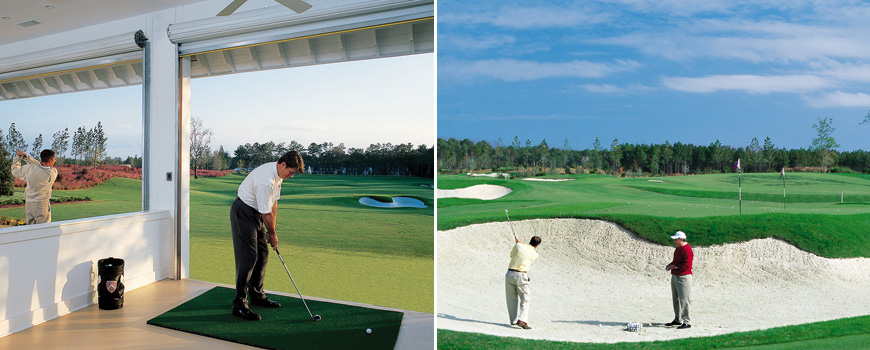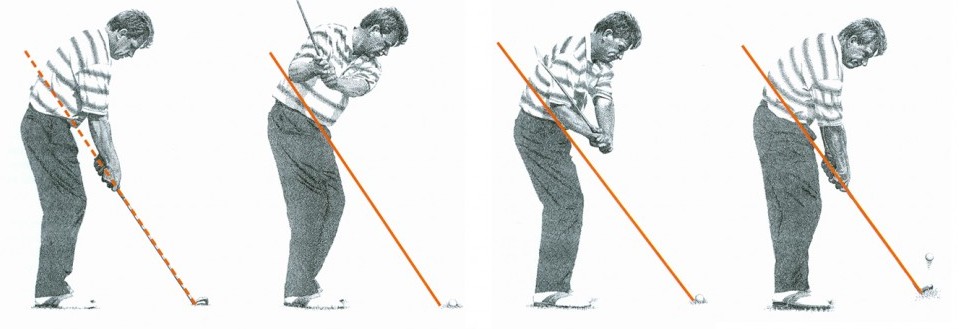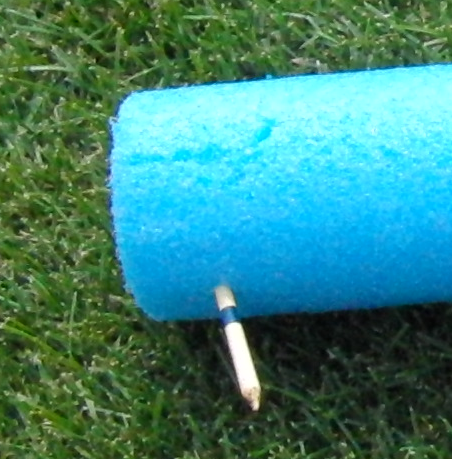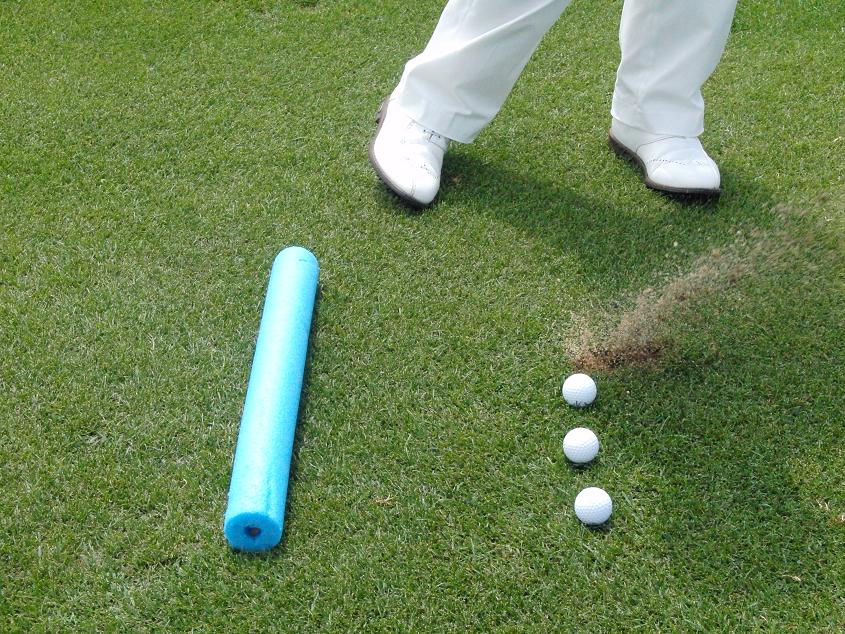Thanks to reader Chuck for this enlightening article posted by Bradley Hughes from www.bradleyhughesgolf.com:

FLAT LIE ANGLES -
The Reason and Logic Of The Greats
I know from personal experience in a question asked directly to Lee Trevino that he used clubs that were at least 3 degrees flat in lie angle from the old standard.
Doug Sanders also informed me in the interview I recently did with him (on page 2) that he had his clubs flattened down so the toe sat down and the heel would never strike the ground first.
If we look at Ben Hogan's club that is in USGA Golf House Museum it is close to 6 or 7 degrees flat in lie angle when compared to clubs of the same length and loft of today.
 If flat lie angles were the choice of the game's best ball strikers throughout history then WHY do manufacturers insist on putting upright lie angled clubs in the hands of golfer's today?
If flat lie angles were the choice of the game's best ball strikers throughout history then WHY do manufacturers insist on putting upright lie angled clubs in the hands of golfer's today?
- The upright clubs make the player come steeply into the ball on descent.
- The upright clubs tell the body stall and insist that the hands flip through impact to try and square that upright lie angled club with the ground.
- The upright club straightens the right arm away from the body and increases clubface roll throughout the shot making timing a huge problem.
- Upright lie angles deteriorate the swing by not stressing the importance of swinging the golf club behind and around the body and rotating through impact with the correct body effort and sequence.
Too often we now see golfers throwing the club through impact - pushing the club head off to the right of the target or throwing the clubhead left of the target with their hand roll - flipping the club face over by hand action trying to correct the mistake.
Today's clubs should all come with a warning label:
"Swing Deterioration And Poor Mechanics Possible By Using This Club"
Add the fact that the shafts are too long and the swingweights and overall club weights are too light and it is little wonder we don't see ball striking mastery on any level any longer. Remember: Feedback of the club and the swing is necessary for improvement to take place. That's why golfers are not improving. They don't know the difference between a good strike or a bad strike of the ball because the permieter weighting and large sweet spots don't allow such reference. The equipment golfers are using is NOT designed to help them adjust their swing to the correct efficient motion.
Bradley Hughes
Very well said Mr. Hughes. I have an inkling as to why manufactureres insist on making clubs lighter and more upright...... Firstly, the clubs are more upright as it causes the faders, who happen to be the majority of golfers, to reduce the amount of curvature of their shots. Notice I never said anything about improving their swings - the upright lies in fact encourage these golfers to continue swinging the way they always have. And secondly, the light weight leads to more speed which creates a Wow! factor when they first hit the clubs. The lighter the club the faster you can swing it. You also, however, relinquish a measure of control over the clubhead and a feel for the club.
So the slicer who tries his buddies new 7-iron and hits a straight bomb over the green is amazed as he has never hit the ball that straight and that far before - he simply must have a set!
As with most things it comes down to $$$$! Don't get sucked in and allow yourself to be enticed with new gimmicks. Know your numbers (length and lie) and play something you like the look of and can feel.





